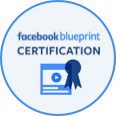
 At the end of the day, the various moving parts of Search Engine Optimization can be a little difficult to wrap your brain around – especially if your thing is selling homemade soaps, not figuring out websites. Unfortunately (or fortunately, as the case may be), the days of being able to count on a yellow pages ad and word of mouth alone are just about gone. Social media has taken over casual conversations, and if you don’t know how to connect the dots between the various social media outlets and your website, you’re already being left behind in the dust.
At the end of the day, the various moving parts of Search Engine Optimization can be a little difficult to wrap your brain around – especially if your thing is selling homemade soaps, not figuring out websites. Unfortunately (or fortunately, as the case may be), the days of being able to count on a yellow pages ad and word of mouth alone are just about gone. Social media has taken over casual conversations, and if you don’t know how to connect the dots between the various social media outlets and your website, you’re already being left behind in the dust.
One way to help you bring things into focus is by concentrating some of your energy on getting customer reviews and ratings online. It is estimated that up to 90% of all users who search for a service or product provider on the Internet read customer reviews and look at ratings. This number doesn’t fall below 75% either. So at minimum, 3/4 of all individuals searching for something online are looking at customer reviews and ratings. That’s a lot of potential business that you don’t want to leave on the table.
It makes sense, too. After all, if you consider things with your customer hat on, you don’t want to get stuck with substandard products or services, so betting on the fact that you’ve read reviews and ratings is a pretty safe thing. Don’t expect your prospective customers to be any different than you would be on that subject. And not only are these individuals reading the reviews, they trust them, as well. In fact, they trust them almost as much as a verbal, face-to-face recommendation from our friends and acquaintances.
You need to remember that your reputation is going to be out there for everyone to see whether you will it or no, so you might as well play in the same sandbox and build the best sand castle while you’re at it. Getting your website or page linked with customer reviews and ratings just makes things that much more qualified in the minds of your potential customers. There is also a newer trend that has developed called an NPS, or Net Promoter Score. This is a simple question asked of customers that determines how likely they would be to recommend the business to a friend.
Based on that score, a simple algorithm is run to get a percentage for each business and that can be posted along with reviews and ratings. This trend is gaining popularity – it is easy to understand, respond to, and use for ranking.
But obviously you want to manage things to avoid the bad review – they are so deadly these days since it isn’t just the local circle who gets the message but literally everyone in the world might have it available. So best practices are called for if we want to outshine the competition. You need everyone in your organization to be onboard with stellar service, problem resolution, and excellent response in the event of any problems called out. In this way, you can continuously gather satisfied customers who will sing your praises and help you rise through the ranks of online searches.









